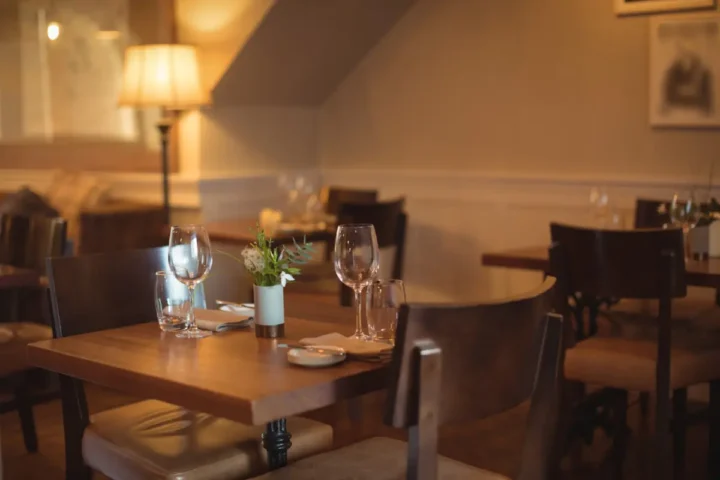How to Choose the Right Restaurant Table for Every Space
Choosing the best restaurant tables for your establishment is not just a visual decision. The tables you choose influence your guests’ comfort, your operating efficiently and the atmosphere you create. Putting some consideration and time into this decision will boost your physical space and your business objectives for many years to come. Your restaurant choice of tables has a significant impact in guest satisfaction and operational flow.
The right tables will help you strike a balance between seating capacity with comfort, reinforce your brand and identity, and ensure your space is inviting and practical. In this guide, you will learn about the important considerations for every type of dining area to ensure that your choice works for your needs—and your customers—today and tomorrow.

Understanding Your Restaurant’s Theme and Audience
Every dining environment has a story to tell and tables play a significant role in telling that story. Reclaimed wood tables may offer a rustic restaurant a more authentic feeling and charm. Upscale bistros may have customers seek polished marble or contemporary glass table tops. Family-friendly places may want to consider durability and functionality.
Knowing your target customer base is helpful in determining how their preferences and behaviors will influence the selection process for furniture. It is important to recognize that the dining experience imagined by your customer base will influence your furniture choices. When the theme of your restaurant, the type of service, and the furniture are thoughtfully considered and aligned, guests will enjoy a seamless restaurant experience while solidifying your brand.
Space Optimization and Table Layout
To make the best use of your dining area, careful planning is key. You should start by measuring the space you will be using and thinking about how to balance the maximum number of people who can be seated comfortably. A practical set up will not only maximize table numbers, it will also optimize traffic flow and allow customers and staff ease of movement. The shape of your tables is significant:
- Square Tables: are best for smaller groups or booths. They work well in tight spaces and create intimate settings for couples or small parties.
- Rectangular Tables: offer flexibility of format, as there are multiple ways to arrange them, including incorporating larger tables that create various seating arrangements.
- Round Tables: are great for conversation and/or interaction in groups and great for communal dining or gatherings.
Generally, the minimum distance between two chairs should be between 24 and 30 inches, to allow customers to move without bumping into the nearest diner and provide space for staff to facilitate service. While spacing requirements may vary based on setup, spacing is important for better dining experiences, quality of service and overall experience for your customers to be better and the amount of service provided to be improved.
Material Selection for Durability and Maintenance
Restaurant tables are essential for maintaining a restaurant’s appearance and functionality. Wood is a classic choice, providing warmth and a classic vibe, but may require regular maintenance to minimize staining. Metal is a durable alternative, easy to clean, and suitable for high traffic environments, including outdoor spaces. Laminate tables are budget-friendly, easy-to-clean, and durable, suitable for high turnover or frequent use. They are ideal for food spills and are not easily damaged.
For restaurants with high turnover and maintenance, materials that can withstand repeated cleanings while maintaining their appearance are preferred. These surfaces are especially important for restaurants with high family activity or large groups.
Comfort and Ergonomics
The comfort of your tables and chairs is very important in ensuring that your customers are satisfied. Typical restaurant tables are about 30 inches in height, while a typical restaurant chair seat height is about 18 inches.
It’s essential to ensure table and chair proportions match well together and ensure that you leave adequate leg room for your guests of all ages and mobility levels. You should also include accessible seating options in your layout planning, such as tables that have a clearance for a wheelchair, so that every guest feels welcome and accommodated.
Flexibility and Functionality
Today’s restaurant operations also require adaptable space that accommodates many group sizes and dining styles. This can happen when using modular tables, expandable tables, and stackable chairs. Everything can be reconfigured in minutes by staff to accommodate different parties, special events and private functions. Also, all multipurpose tables, seating capacity, and storage of surplus dining room furniture can be done quickly.
Budget Considerations
Although the temptation might be to find the lowest prices available, you should consider the long-term benefits of buying quality furniture. Quality furniture is built to stand up to everyday use and cleaning. You may find it actually saves you money in repair or replacement in the long run.
Quality choices also safeguard the aesthetics of your restaurant: chipped, wobbly or mismatched tables can impact the overall effect of even the most on-brand, aesthetically pleasing establishment. You really must make choices based on your brand image, and what gives you the best return on investments, although sometimes this may mean purchasing less and getting a higher-quality product.
When making decisions, think of your restaurant’s concept, maximizing your space, material durability, guest comfort, and functionality for the future. If you take all of these variables into account in your furniture choices, you can make a more informed choice based on the value that they will add to your guests and your business. Choosing furniture requires care and consideration to ensure your investment provides you with the best potential return; which is, a good dining experience and return customers.


